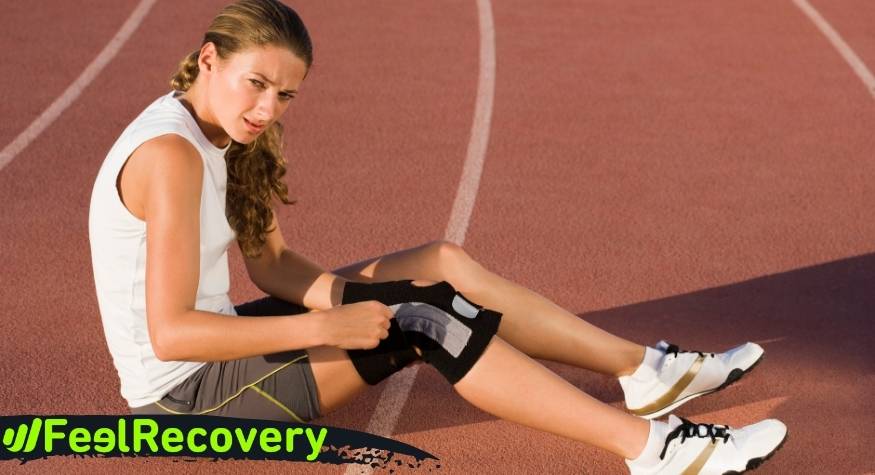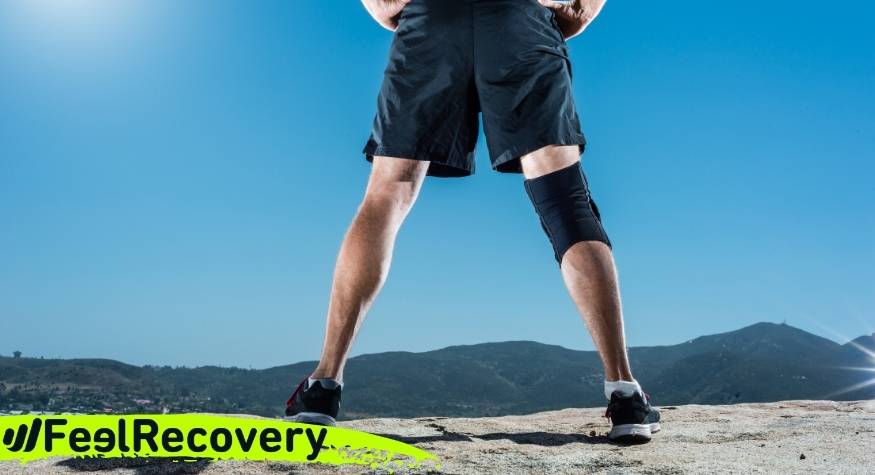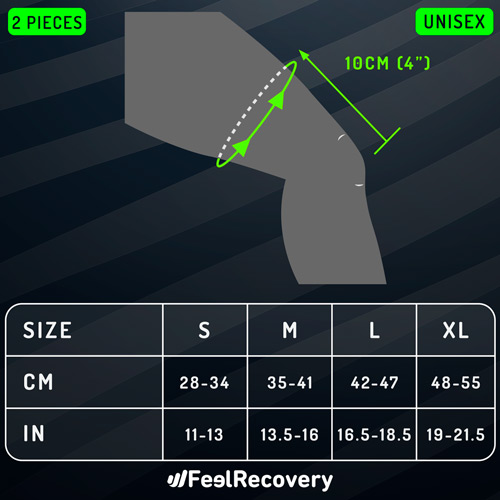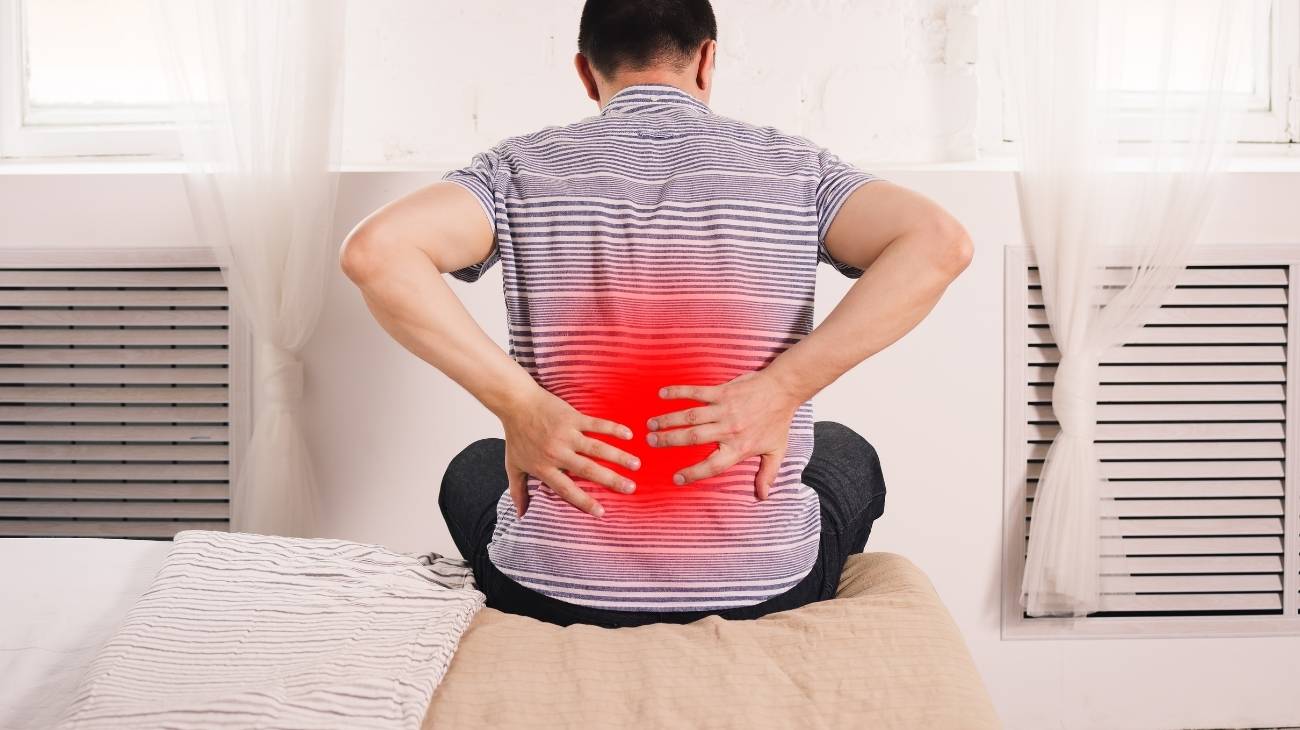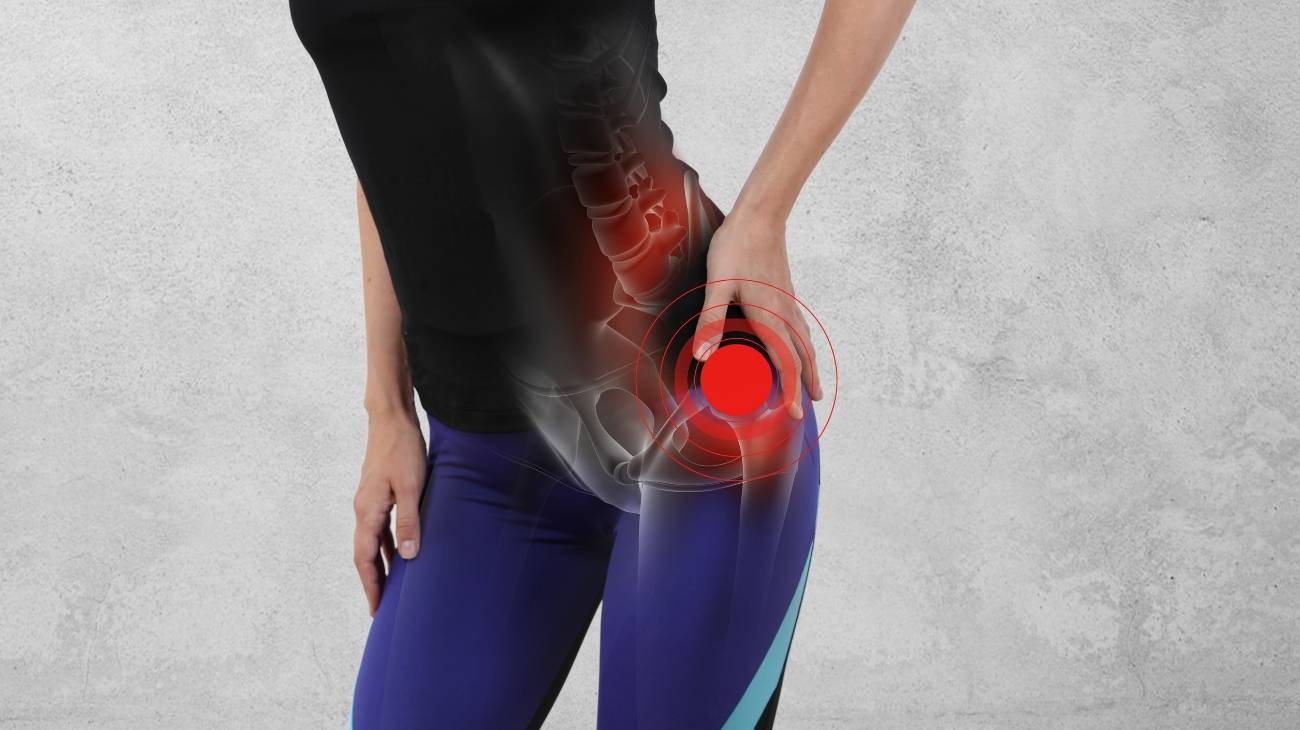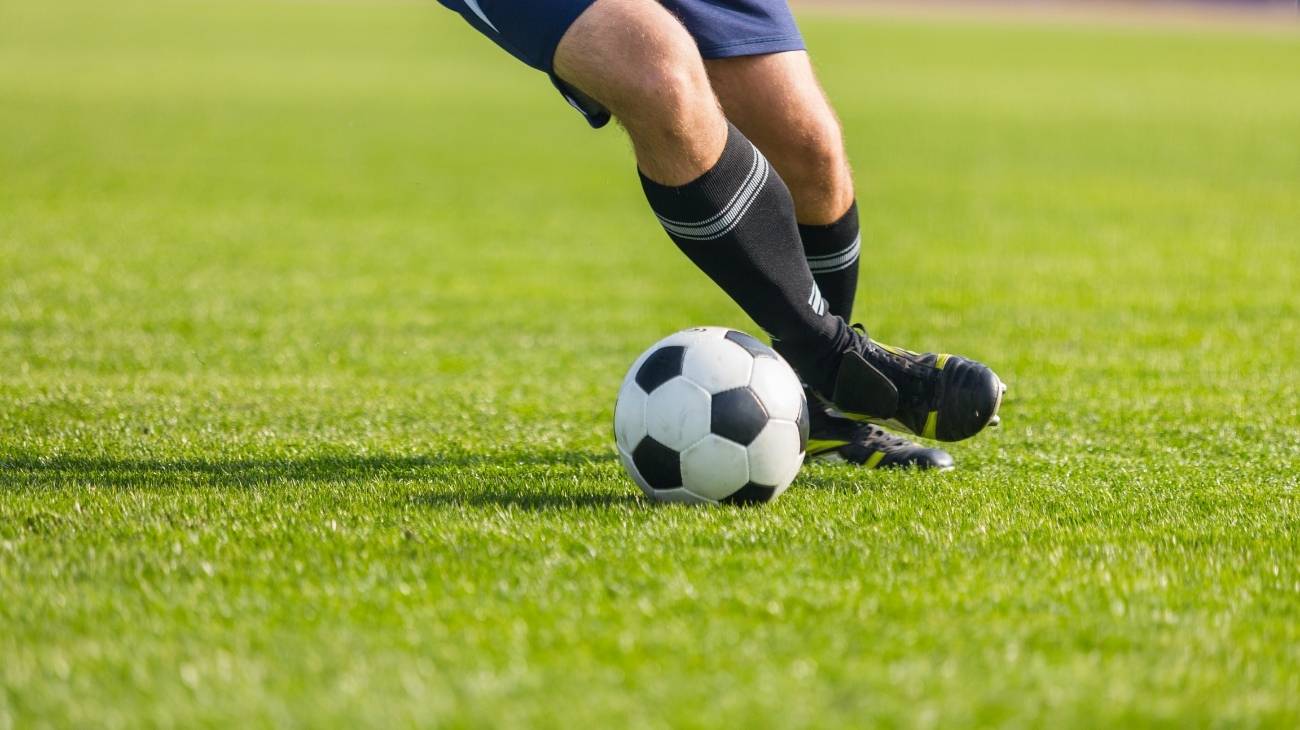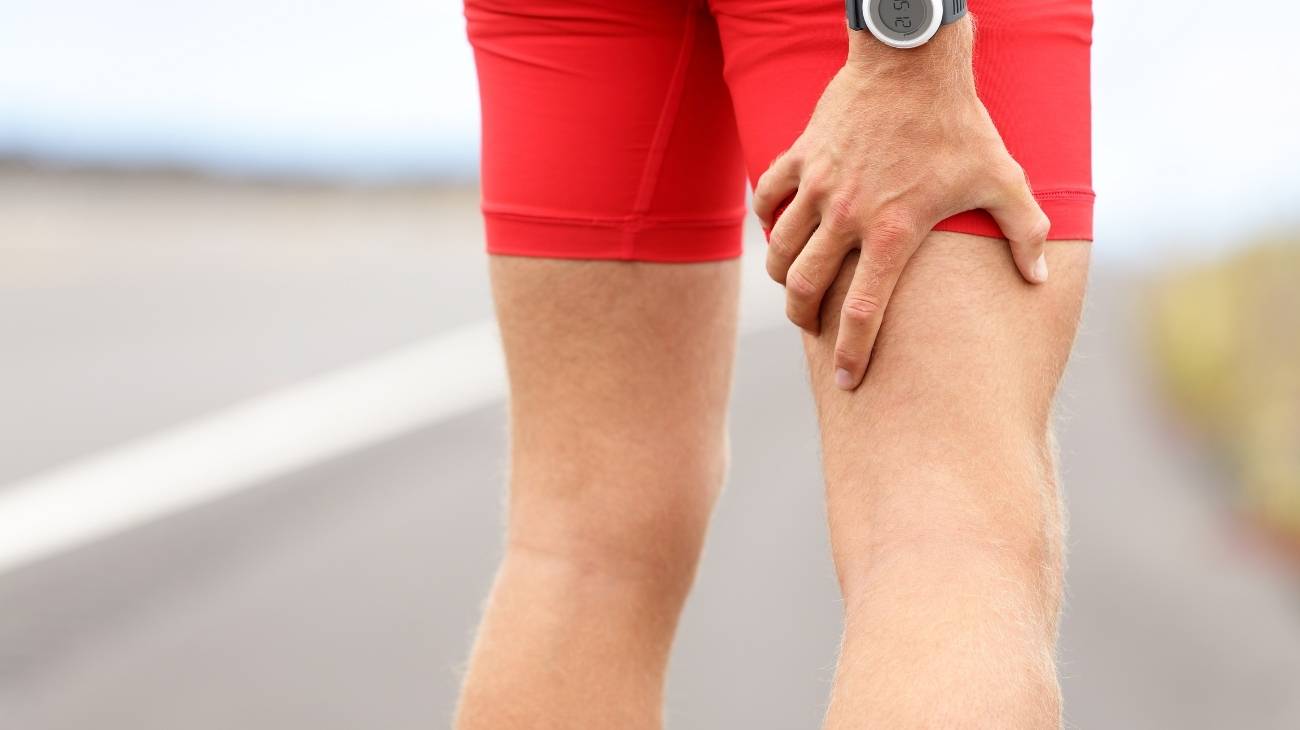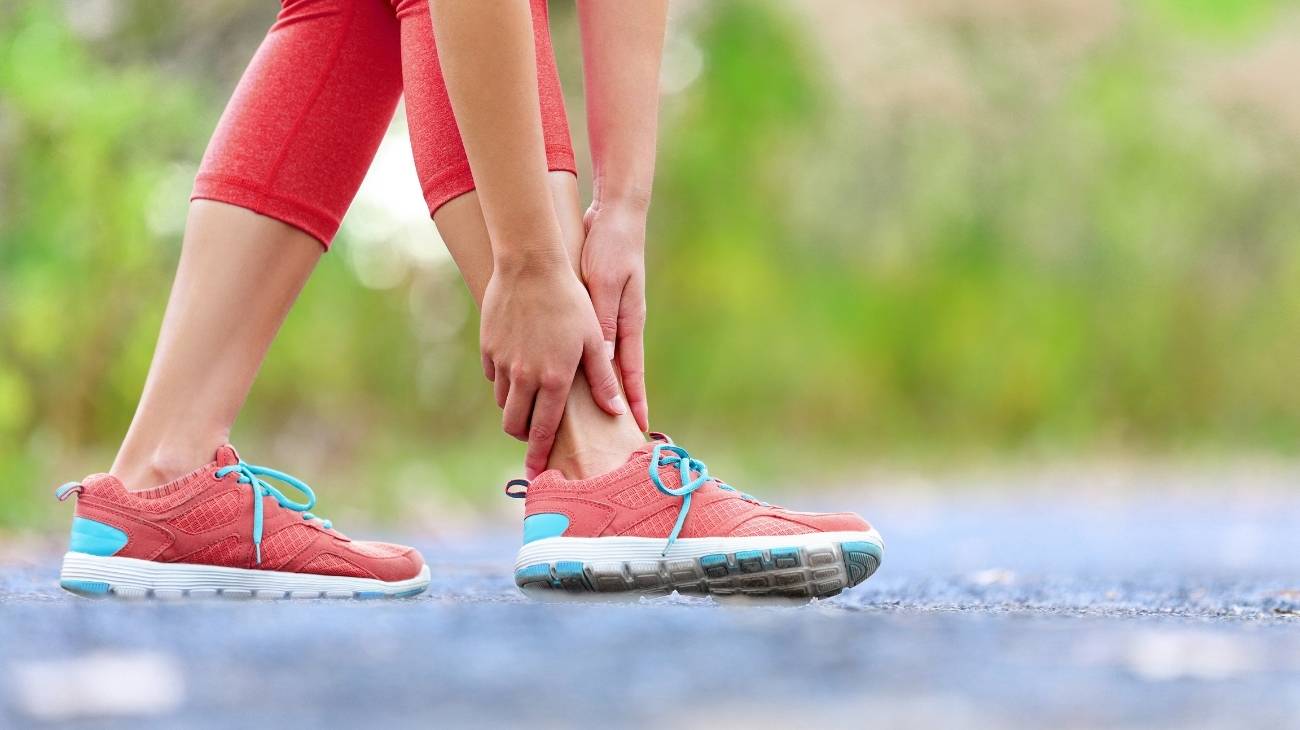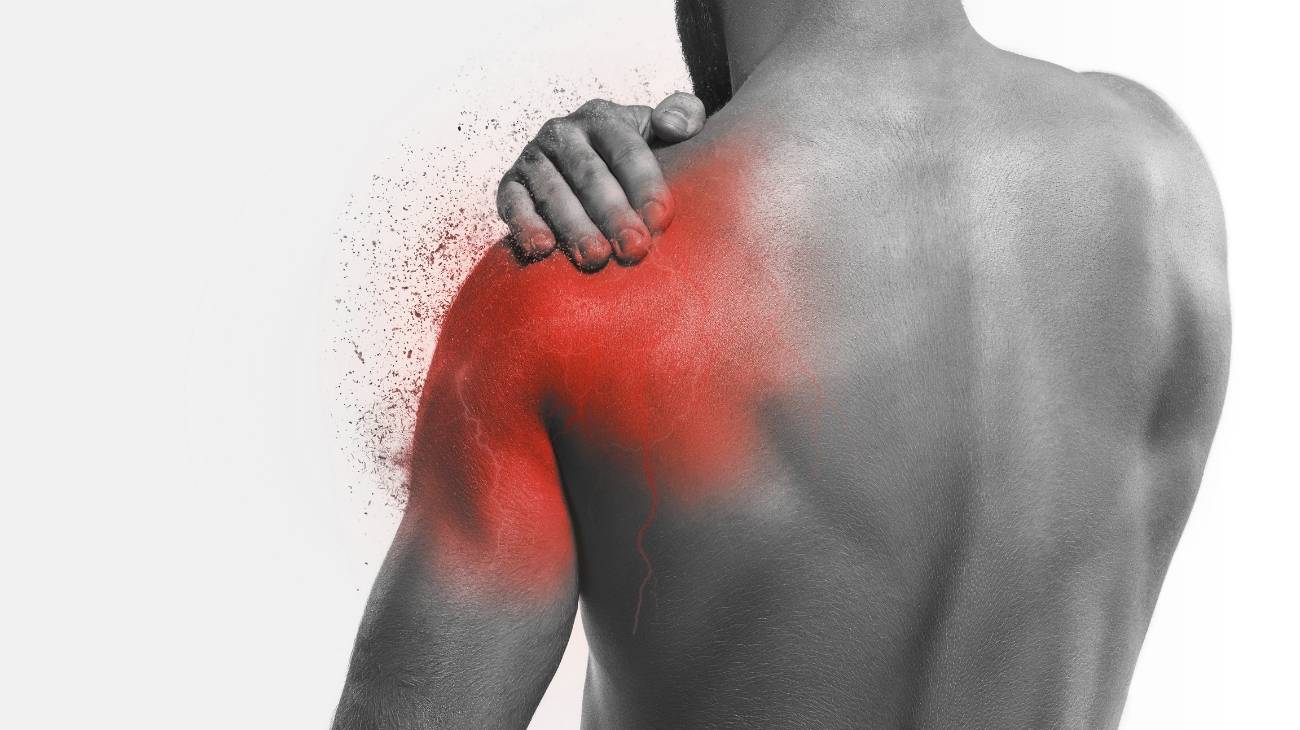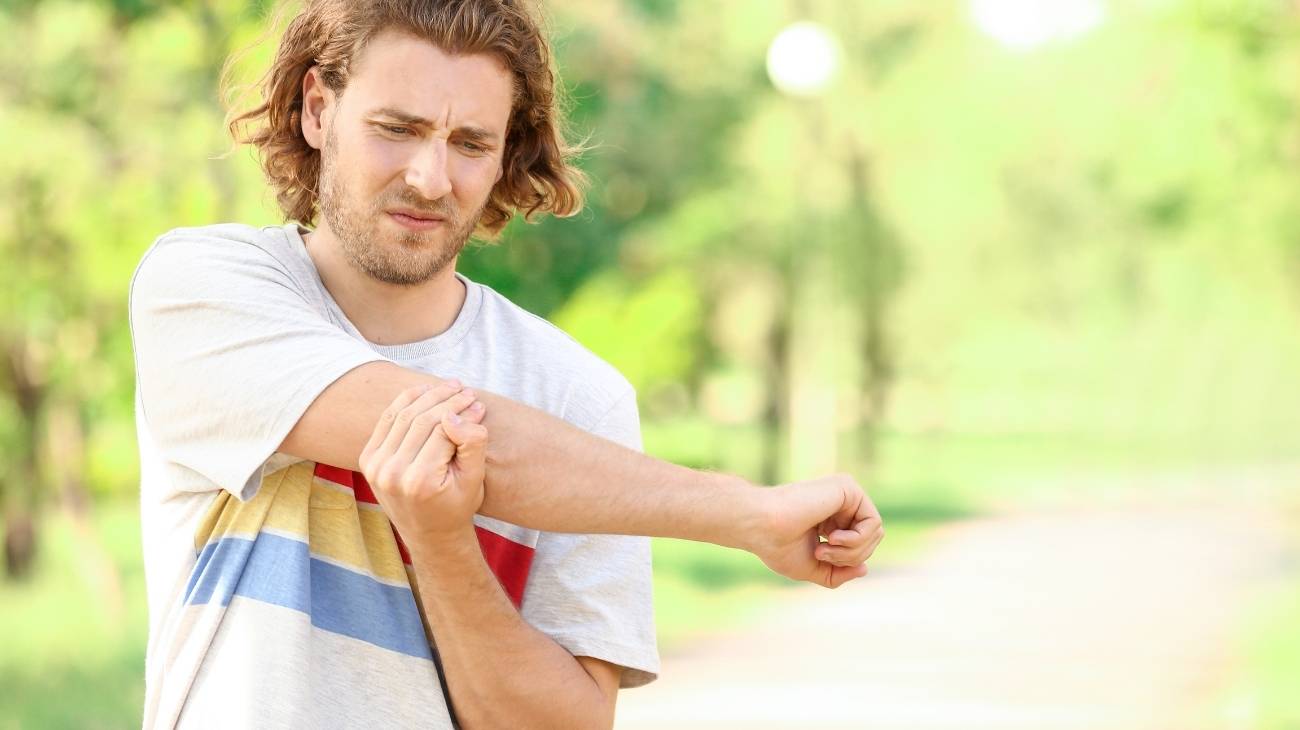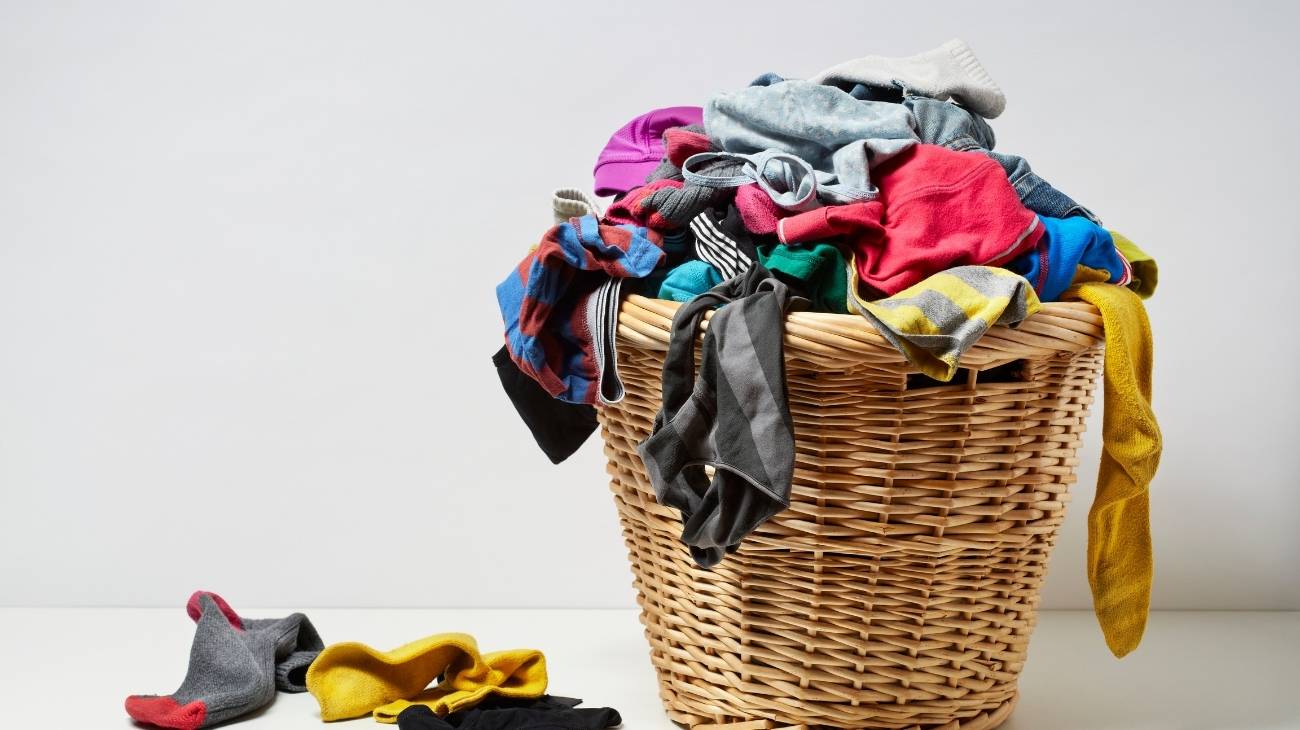- What are the most common knee injuries when we play sports?
- In which sports and physical activities is it common to use sports knee braces?
- What type of knee braces and patellar straps are best for sports injuries?
- What features should you consider before choosing the best sports knee brace for men or women?
Practicing sport has become more common in recent years, bringing health benefits. Whatever your tastes in physical activity, it is important to practice the discipline of your choice safely and comfortably, because when it is done, we are exposed to injuries that can be harmful.
Generally, the knees are the most subject to pressure, so it is advisable to use knee compression sleeves to protect you from any kind of inconvenience. In the following article we will help you to correctly choose the type of knee brace that best suits your needs.
What are the most common knee injuries when we play sports?
As mentioned above, when doing sports, we are exposed to injuries, but it is important to know which ones are more frequent, their symptoms and in which discipline they are more likely to occur. In this way, we can be prevented, know how to react in the event of one and be able to have all the previous measures in place to prevent them from occurring.
Below is a list of the injuries we are most prone to when playing sports:
Knee sprain
This kind of injury occurs when one or more muscle ligaments are subjected to great strain and change shape, stretch or contract causing symptoms such as pain, swelling, muscle immobility and even inability to walk.
The latter occurs when, in the worst case, the knee ligament is torn. Generally the cause of knee sprains is a bad movement, bad technique when doing an exercise or a too sudden and violent blow. The tear may be total or partial, depending on the severity of the blow.
It is quite common in sports such as basketball or football, because certain kinds of frequent movements such as a quick turn of the knee joint because of the foot resting on the ground, or landing after a jump or very fast run, are prone to cause sprains.
Muscle strain
A fairly common injury in almost all sports, this occurs when the knee muscle is stretched or forced beyond its capacity, usually during stretching or those movements that require some flexibility from the athlete. Although it is not usually serious, it can be quite annoying as it generates discomfort throughout the following exercises if a certain amount of rest is not kept.
It is commonly referred to in the sports lexicon as a pull, and many people choose not to make a big deal out of it because it does not cause more serious symptoms, however, if the muscle does not recover properly it can lead to more serious injuries. That's why it's recommended that you wear protectors such as knee braces to make sports more comfortable and avoid this kind of discomfort that can hinder you.
Knee bursitis
Knee bursitis occurs when the pockets that store fluid above the knee become inflamed. This inflammation is due to repetitive friction movements in the joint or squatting positions that cause stress on the joint, but also by other activities that generate extreme load and even by a direct blow to the knee.
Bursitis can occur in any of the four pockets that store fluid, but the most common occurs on the kneecap or on the inside of the knee below the joint. The main symptoms of this injury are feeling hot and swollen, can cause pain even when not physically active, and is capable of restricting mobility.
This type of injury is common in sports that can cause direct blows to the knee or require prolonged bending, such as runnig, football and volleyball.
Chondral knee injury
It is a type of injury that occurs to the tissue that lines the bone of the knee joint, better known as cartilage. This is caused by a direct or indirect trauma, but of high intensity, for example, a blow that directly injures the cartilage or a sudden movement of about 40 degrees of the knee that can injure the tissue, can even be caused by a violent contraction involving the joint.
This kind of trauma could be more complicated than others, because if the cartilage suffers a damage that fragments it, this must be replaced generally by surgery, although there are other kinds of regenerative or therapeutic treatments. This condition is also common in sports in which direct contact with the knees is frequent, such as football or basketball, which is why the use of appropriate protective equipment is so important.
Patellar tendonitis
The patellar tendon is the one that connects the kneecap to the tibia and works in turn with the frontal muscles of the thigh allowing mobility and movements such as running, jumping or kicking.
Patellar tendinitis is an injury to this particular tendon caused by the excessive use of movements that stretch the tendon until small partial tears occur, or in the worst case, a complete rupture. As these tears multiply, they cause greater pain.
The first symptoms start when you feel a strong stabbing pain between the kneecap and the tibia, this kind of injury usually does not appear at once, but it starts these discomforts when you start the exercises, then prevents the practice of them. If it is not treated or you keep the proper rest, it can prevent daily activities such as climbing stairs, bending or walking, this depends on the severity and quantity of partial injuries.
Bestseller
In which sports and physical activities is it common to use sports knee braces?
There are different types of sports, suitable for the tastes, needs and requirements of each person. These range from those of high intensity such as CrossFit, through those of endurance and constancy such as yoga, or those of skill such as football and basketball to those that only require disposition such as recreational jogging. Each of these is different, but all offer great health benefits.
However, for the practice of most sports, it is necessary to use the appropriate support equipment that offers safety when practicing any discipline by ensuring that the body is not injured. One of the most versatile instruments that we use for support in most sports are knee sleeves. These protect us from jumps, long walks, compromising positions, or any sudden movement that could cause us harm.
The following is a list of the sports where the use of knee sleeves is most recommended:
Basketball knee braces: The use of knee braces is common in basketball as it is a sport that requires a high degree of mobility and muscular tension. Athletes who practice this sport must perform turns, jumps, sprints which, as mentioned above, are the kind of movements that frequently cause certain types of injuries such as spins and tendonitis.
Running knee braces: Generally, athletes who practice running tend to use these clothes as a preventive measure, since the knees and their muscles are the most used during the practice of this discipline. In fact, it is one of the sports with the highest rates of knee injuries.
Soccer knee braces: In soccer practice, these pieces are recommended when the athlete has suffered or is recovering from an injury, because they prevent this joint and the tendons from suffering more or causing partial damage by sudden movements.
Volleyball knee braces: In this sport, the bending movements are constant and abrupt, and jumps are performed in a recurrent manner. They can cause friction, affect the cartilage, inflammation and constant discomfort, to a greater extent due to the initial position of this sport, the semi-squat, which is why the use of knee sleeves is essential for their protection.
Knee braces for cycling: In this discipline, the knee is one of the joints that is most heavily strained, due to the practice of pedalling, and greater pressure is exerted on it. During pedalling, the knee is flexed and extended and at the same time there is a rotation between the tibia and the femur, which, over a long period of time, can cause wear to the joint. For this reason, it is recommended to use the knee sleeves to avoid further damage from this kind of movement which, thanks to the support, prevents it.
Knee braces for weightlifting and fitness: Compression garments in particular are almost indispensable when practicing a high-performance and physically demanding sport such as weightlifting, since by the very nature of squats and repeated bending, our muscles, tendons and joints tend to suffer and are prone to injury.
Golf knee braces: This is a sport that requires good dexterity, strength and flexibility since the most common movement requires bending above all the knees. In addition, it requires good support and momentum, and that is why practitioners, especially older ones, look for knee sleeves that guarantee high quality compression in order to keep the joint healthy and away from injuries caused by sudden movement.
Knee braces for tennis, badminton and racket sports: This type of racket sport requires great agility, flexibility and rebound, which is why it is recurrent to observe how the majority of sportsmen and women who practice this type of discipline resort to the use of knee braces in order to prevent injuries caused by the continuous sudden and high resistance movements they make.
Crossfit knee braces: For crossfit, it is common to use knee supports that are capable of providing extra support to practitioners of this physically demanding exercise. It is necessary for people to have support equipment that allows them to balance and distribute their weight better on their body without significant damage to their joints.
Gymnastics knee braces: In this practice there is a tendency to use sports knee braces to avoid injuries in athletes, due to the large number of highly flexible movements that are performed in addition to jumps, openings and stretches where this joint plays a fundamental role, being prone to sprains and tendon injuries due to this type of movement.
Knee sleeves for Yoga: As in sports gymnastics, in yoga movements are performed that require a lot of flexibility and, although they are performed at less abrupt frequencies, injuries to the joints are also common due to the tension exerted on them, and the constant muscular pressure due to stretching. Knee braces with a lot of flexibility are also recommended, although in this case greater support is required because it is more likely that the weight of the body itself will be worked on in a more sustained way.
Football knee braces: This is a sport known to be quite rough, where body to body contact is frequent, just like football, the knees are quite prone to being hit by hard surfaces such as the ground, causing injuries such as cartilage wear, which is why the use of garments that provide protection throughout this joint is always encouraged to avoid this type of painful discomfort.
Knee braces for hiking, walking, climbing and mountain sports: One of the main characteristics of this kind of sport is the inhospitable places, with great unevenness, rocks, uneven ground where the sportsmen are challenged to overcome these extreme conditions. For this reason, it is highly recommended that compression knee sleeves are used to provide adequate support for the knee, and to prevent it from suffering from abrupt or too pronounced movements.
Knee sleeves for boxing, karate and contact sports: In all contact disciplines, our knees are prone to trauma due to the high probability of making contact with hard surfaces or receiving direct blows, so the use of knee sleeves and all regulatory protective equipment is almost mandatory to avoid further damage.
What type of knee braces and patellar straps are best for sports injuries?
When choosing our knee braces or patellar straps, it is essential that we can make an informed decision, taking into account most of the aspects needed to buy a garment that meets our needs, and that is capable of offering us the security we seek when doing any sport.
Below are some recommendations of the best knee sleeves for practising different sports:
Knee compression sleeves
Traditionally they are made with neoprene sleeves that allow flexibility, but maintain support and also allow good blood flow. They have elastic fabric and a design that allows it to be more comfortable on the skin and with greater grip, thus preventing it from sliding down.
The compression knee sleeves also have the particularity that helps to improve circulation, prevents and improves injuries such as tendinitis and chondromalacia of the patella, because of the pressure it achieves, thus avoiding friction and wear that can be caused in the knee due to muscle exhaustion. It is also functional thanks to its adaptability and comfort, as it can be easily adapted to the daily routine without causing major discomfort.
Chondromalacia patellar strap
It is a ribbon type knee brace, but more specialized and is generally made with a simple but quite functional design. This type aims to tighten the kneecap and thus reduce symptoms such as acute pain caused by injuries or other causes. This type of knee brace is known as a specialized type, made to treat specific or recurrent injuries in an athlete.
Knee supports
There are a wide variety of knee braces, however, the most suitable for treating knee injuries are stabilising knee braces, which provide support, stability and compression to the knee. These generally have the support guaranteed by extra materials such as pins, to ensure that the athlete is able to make versatile movements without having to lose balance or strength in that activity.
What features should you consider before choosing the best sports knee brace for men or women?
Sports knee sleeves offer many advantages when it comes to practicing different disciplines, but it is necessary to take into account different aspects when choosing, in order to acquire the right one that can be adapted to our lifestyle and the sport we practice. Furthermore, it is important to choose one that offers the level of safety, comfort and protection that is needed according to the discipline that you practice, since the physical requirements are different in each one.
Depending on the sport
- Running: For running, we recommend the use of knee braces that cover the entire joint and are capable of providing sufficient support, preferably with pins but which are made of flexible material, spandex, for example. Compression type knee braces are ideal as long as they allow sufficient breathability.
- Football: For football practice, we recommend the use of those which are flexible, made of neoprene but which come with a more solid material included so that they can protect the sportsmen from direct contact and which are easily adjustable.
- Volleyball: As with football, we recommend that the knee supports used in this sport are elastic, flexible and with a support material that protects the kneecap from direct contact with hard surfaces. However, we also recommend ribbon-type knee braces, which are capable of preventing sprains due to jumping.
- Cycling: In the case of cycling, we recommend the use of knee braces that offer compression to protect the knee during the whole process of pedalling, also allowing a lot of mobility. It is preferable that they do not have any other type of solid material or integrated gel, but that they are adjusted to the size.
- Weightlifting and fitness: For this type of high performance exercise, compression straps are required to offer good support and keep the kneecap in place. This type of knee brace also offers an extra advantage and ensures better rebound when performing the weight-training movement.
- Golf: In golf, due to the type of rotation movements, plus the long days in which the sportsman must remain standing, it is recommended to use stabilizer type knee supports, especially those with adjustable straps. They are the best for this sport, since they effectively prevent the muscular pains associated with this kind of pressure.
- Tennis, badminton and racket sports: For racket sports it is recommended to use compression stabilizing knee supports that can provide complete support to the joint, during sports sessions that require very flexible movements, jumping, bending and squatting.
- Crossfit: For all exercises involving weight lifting, it is important to use knee braces that offer good compression, but that also protect the kneecap in such a way as to ensure good blood flow and adequate weight distribution without the joint suffering, all of which is generally found in treadmill type knee braces. Or, in some cases, in rehabilitation when you have suffered previous injuries.
- Sports gymnastics: For sports gymnastics, we recommend the use of fabric knee braces, which are very flexible and elastic but offer good support so that all the movements of high physical condition that are accustomed to the practice of this sport can be performed freely.
- Yoga: As in gymnastics, it is preferable to use fairly flexible fabric knee sleeves that are able to adapt to the athlete's mobility. However, in this case, some with greater support can also be used, for example those with a certain gel filling to help the muscles sustain great tension in the knee due to the prolonged stretching position.
- Rugby: As it is a sport with a high probability of contact between the knees and solid surfaces, protective knee braces with a complete coating are recommended. They offer safety against direct and indirect blows, which is very frequent in this discipline, and may even have a protective front made of sports plastic or other resistant material.
- Hiking, walking, climbing and mountain sports: For this kind of sports, you can use compression knee sleeves , either open or closed, but it is important that they are stabilizing to accompany the knee with extra support during long runs generally in inhospitable soil.
- Boxing, karate and contact sports: As with rugby, these are sports that are practiced body to body, where there is a high probability that the knee may have direct hits or surfaces and even injuries from violent movements, so knee braces reinforced with protective materials are recommended, to the extent that they can withstand these days by taking care of the knee from this kind of injury.
Manufacturing material
The knee braces can be designed with different materials suitable for resistance in sport and adaptability to the body, but with a specific use according to the objective of the sport, among the most common:
- Neoprene knee braces: Generally, compression-type knee braces are made with neoprene covers in order to guarantee better support and stability when helping to maintain weight and distribute it over the knees.
- Gel banded knee supports: This is not the main material, but it is characteristic of some knee supports that seek to help in a therapeutic manner, providing a massage through the gel, with the movements that the sportsman or woman makes. Mostly required when there are symptoms of an injury that causes muscle weakness.
- Made of elastic material or spandex: These fabrics are more frequent in those designed with crossed bands being made of a highly flexible rubber type material, but suitable for sports and skin. Generally they are the most recommended for sports that require a lot of flexibility in the movements and good comfort is needed.
Type of support
Some knee supports have a type of fastening that is specific to the material they are made of, however, some sports require extra support for this purpose and some of these additional materials are even more adjustable:
- Hinged knee supports: They are made of a light metal that is capable of resisting greater tensions and that allows you to open or close the knee pad. This tool is incorporated with the purpose of guaranteeing stability and allowing free movement, but with the necessary compression without it being too uncomfortable or heavy for the knee.
- Knee braces with Velcro: This is a hook, generally made of velvet, which is very useful when holding or closing the garment to the person's liking. It is highly recommended for heavy sports because of its soft but resistant material.
- Knee supports with metal or plastic closure: They are not so common in knee supports, but they are undoubtedly an ally when we need extra support, as they allow it to mould much better to the shape of the joint and significantly reduce the chances of the garment moving around. They can be designed in metal or even plastic.
- Knee braces with closing clasp: This is a type of fastening that is added to some open-type knee braces. It is a good option that is used for hiking, because it is very easy to put on. However, it is not recommended for days of very high intensity and mobility.
Size
The sizes of the knee braces can be obtained according to the universal number system or by standard sizes expressed in letters that cover standard sizes, with XS being the smallest and XL from now on being the largest. It is essential that you know the diameter of your knee expressed in cm so that you can get an idea of which one to buy. The sizes are important for a perfect fit, being too loose would prevent its function and being too tight can cause problems such as difficulty to move.
| SIZE | S | M | L | XL |
|---|---|---|---|---|
| CM | 28-34 | 35-41 | 42-47 | 48-55 |
| IN | 11-13 | 13.5-16 | 16.5-18.5 | 19-21.5 |
| WHERE TO MEASURE? | ||||
| Measure the circumference of the thigh, 4 inch/10 cm up from the center of the kneecap (*View image) *Note: If after measuring you are between two sizes, choose the larger size |
||||
Design
The knee braces are designed with the aim of covering all possible aspects to satisfy athletes according to their needs, these range from aesthetic design, through functionality, adaptability, or sports performance according to the discipline that the athlete practices and whatever their level of physical activity.
According to each sport, there are different designs on the market that offer greater performance, better performance, resistance or pain relief and injury prevention. It is important to choose one that is in accordance with the level of physical demand and that accompanies us in strengthening our weaknesses to take care of our joints and muscles.
Price
Before making the purchase, it is important to evaluate which is the best for us and the expectations we have of them with respect to their life span. Also, of the frequency of use and the type of sport we practice to make a smart investment according to all the aspects we have been evaluating.
So, the purchase of the compression sports knee brace should be done evaluating mainly the outstanding aspects before its cost. The fact is that an economic product will not have the expected effects because its materials will not allow it. Acquiring a compressive knee brace with a high price, but that will protect you at all times and maintain a healthy knee to properly develop the sport, is the best investment you will have.













